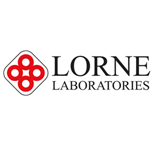Types of Exchange Transfusions
1 February 2017
Exchange Transfusions have been used since 1946; nowadays they are saving countless lives everyday. There are many different types of exchange transfusions that can be used as treatment for a variety of conditions shown in patients. Here we list the most popular types of exchange transfusions being used today.
Partial Exchange Transfusion
Partial Exchange Transfusion is either increasing or decreasing a patient’s hematocrit while maintaining a constant blood volume.
Partial Exchange Transfusion has two methods; the first typically involves pre-transfusion phlebotomy of whole blood followed by a transfusion of PRBC (packed red blood cells). The second is removing whole blood using an IV in one arm while transfusing PRBC’s into the other arm. The latter is preferable for longer sessions where a larger quantity of blood being replaced. This helps prevent the chance of shock from lack of blood.
Partial exchange transfusions are often done for polycythemia conditions.
Single Volume Exchange
SVET, refers to removing blood equivalent to the blood volume of the patient. Single volume exchange transfusions haven’t been proven to be less effective in the treatment of jaundiced newborn infants, however double volume exchange transfusions has been the default procedure due to its confidence of reducing brain damage.
Double Volume Exchange
DVET refers to removing blood that is equivalent to double the blood volume of the patient while leaving the intravascular amount the same. DVET is mainly used for the management of the conditions hyperbillirubinaemia and haemolytics disease of the newborn. This procedure is typically used after other methods of treatment have been exhausted and uses PRBC’s (packed red blood cells) re-suspended to the desired hematocrit in compatible frozen plasma. Double Volume Exchange Transfusion is typically used as a treatment for jaundiced newborn infants as it is shown to reduce brain damage as well as cure the condition.
There have been many studies concerning the difference of treating a patient with a Double Volume Exchange or a Single Volume Exchange procedure. Most of these studies have identified that there is not much difference between the two.
The most common patients that undergo these procedures are babies and young children that are born with or develop neonatal polycythemia or jaundice. Exchange Transfusions are very successful in the treatment of these.
Generally for exchange transfusions to be safe, the patients’ blood should be exchanged for blood from a donor that is compatible. Lorne Laboratories supplies reagents that enable the typing of blood group antigens and the detection of irregular anti-erythrocytic antibodies.
If you would like more information about exchange transfusions, then take a look at our guide. Alternatively, if you have any further questions please send us an e-mail and our team will be happy to assist you
< Back to blog list
Share




